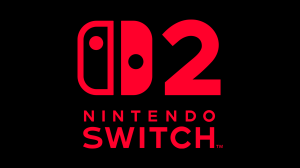Need for Speed is a franchise that has struggled to find its identity in the modern era of consoles. Between the changes in developer (Black Box Games, Criterion Games, Ghost Games) and walking a fine line between narrative-driven experiences and open-world shenanigans, EA hasn’t been able to contend with the Xbox-only Forza and Forza Horizon series. Need for Speed: Heat aims to change this discussion with a racing experience focused on neon lights, the South Florida culture, and questionable police tactics. This effort is mostly a success, despite a fairly underwhelming storyline and inconsistent difficulty levels.
Videos by ComicBook.com
Set in a fictionalized version of Miami known as “Palm City,” Heat shares a universe with 2015’s Need for Speed. The Los Angeles stand-in known as “Ventura Bay” is even referenced within the opening moments of Heat’s story campaign. Although there are slight differences in that the previous game relied on live-action cutscenes in which real actors talk to a silent protagonist while chugging Monster Energy drinks. Heat opts for a different route by focusing on a player-selected character that has a voice, a personality, and plenty of customization options.
As a newcomer to Palm City and the Speedhunter Showdown festival, the player character arrives with the goal of competing in city-sanctioned race events during the day to make “bank,” which is the currency system. However, they quickly run into Lucas, a racer-turned-mechanic that provides the first ride, and his sister Ana, who runs with illegal street racers and has the ultimate goal of joining “The League,” the elite guild of street racers. Her former crew dissolved after a newly-formed task force came within seconds of murdering a racer simply to prove a point.
However, this goal of joining The League is quickly pushed to the side as other issues become the focus of a relatively short campaign that plays out over a handful of forgettable missions. Instead of simply racing against improved competition, the protagonist becomes the best option to fight police corruption in Palm City. Although there is still time to complete Driving Stories for the three characters that teach you about the main racing techniques and unlock special parts for the garage.

Throughout the campaign of Heat, there are a few events introduced that are reminiscent of previous games. Circuit races are the mainstay of the Speedhunter Showdown and require defeating enemies on a closed course while longer sprint races become the focus of night driving. These events don’t have laps and instead make you race from one point to another, often leading from the surrounding hills back into the city. Given that the sprint races are illegal, there is an added danger from innocent drivers accidentally turning headlong into oncoming traffic.
These two types of events are not the only ones available in the fairly sizable Palm City and the surrounding areas. Drift trials are present once again for those that want to channel their inner Ken Block and focus on sliding around tight corners while the newly-introduced offroad races send you bouncing across the beach or down mountain trails. Additionally, Heat features time trials that are used to determine the de facto leader of online crews. This is another “live” game in the Need for Speed series, and Ghost Games make it possible to form a top-tier team with your fellow racers.
The potential problem with this goal is that the online campaign mode, which is optional, was entirely devoid of competition during my 20-plus-hour playthrough. I encountered only two other players, and neither wanted to take part in head-to-head races.
If you grow tired of racing at day or night, you aren’t left without options. There is a multitude of collectibles strewn around the world, many of which show the influence of similar racing games. Graffiti can be found and added to the vehicle wrap editor while neon flamingos can be destroyed in pursuit of undercarriage lights. There are also speed traps, drift zones, and long jumps, all of which hearken back to Forza Horizon and award a one, two, or three-star grade. Finally, there are billboards that must be broken, a la Burnout: Paradise.
While the side events are an interesting addition to the Need for Speed formula, they don’t provide upgrades beyond colored tire smoke or new cosmetic items for the cars. In order to truly unlock better parts to upgrade one of the 127 featured cars, it’s imperative to win illegal races at night while outrunning any patrol cars in pursuit. Doing so upgrades the Rep system. Only by wreaking havoc, angering the authorities, and racing through the neon-soaked Florida streets can you create trust with the parts dealers in Palm City and unlock story missions.
These confrontations with the police are the moments when Need for Speed: Heat can potentially cause frustration. There are three main corrupt police officers introduced in the story, but there are seemingly hundreds more on the prowl during the night events. Eluding them is not an issue when the heat level is three or below, but once it reaches four or even five, it feels impossible to avoid being busted and losing most of your bank and Rep.
Even with one of the fastest Porsches in the game, the police force in Dodge Chargers and Chevrolet Corvettes had no issue maintaining pace. Using nitrous only delayed the inevitable for a mere second or two. The only times that I escaped the pursuing officers came during campaign missions. As one specific example, I was at heat level five during a pivotal chase when m car slid off a cliff after being sideswiped by a patrol Charger and stuck on a tree in a way that defied physics. The police followed me with no regard to their personal safety, slamming into the surrounding boulders and trees at full speed. With my pursuers out of commission, I simply drove away from the wreckage and back to my safehouse.
Apart from the police cars with an unmatched top speed, the act of being “busted” often felt inconsistent. The pursuing vehicles can slam into your car over and over until it wrecks, or they can make you stop on the side of the road, at which point a “busting” gauge will decrease until empty. A straightforward system overall, but there were six specific instances in which I was busted while sliding around a corner at 60-plus mph. The gauge just appeared and emptied despite the police force not being close to my car.
With a large variety of car manufacturers that includes Porsche, Ferrari, Honda, and Ford, it’s critical that the driving is satisfying. Heat tries to strike a balance between simulation and the more arcade-y style of Forza Horizon. The jumps aren’t quite as outlandish as other games while the drifting varies in cartoonishness based on the individual parts put into the car. Overall, this effort is a success. The cars have weight, and there is a distinct difference between the different classes based on whether they are built for drifting, offroading, or topping 200 mph during a street race.
Obviously, there is a focus on racing from event to event, preferably at a rapid pace, but it’s often best to slow down and take the world in. The world of Heat is technically beautiful, largely in part to the lighting and weather effects. This is Florida, so the day can change from sunny and hot to pouring rain within a matter of moments. During these storms, the palm trees will blow in the wind while the raindrops cover the screen. The excess water doesn’t affect the driving quality but it does leave massive puddles on the street that show reflections of the cars, trees, and buildings.
There are certainly grimy aspects of the world, such as some of the background buildings, but the environment that is front and center while driving looks fantastic, even on a base PS4.
Heat may not have a traditional day/night cycle such as other open world games, but it does offer the opportunity to switch between times relatively quickly. You are given the choice to leave the garage or one of the many safehouses at day or night, which changes the available story missions, races, and daily challenges. There is also a quick button press to switch from day to night on the fly. Although doing the opposite will require going back to the garage.
Of course, any proper racing game requires a fitting soundtrack, and Heat does not disappoint. The music properly reflects the South Florida theme with a mix of Dubstep, hip hop, and Latin pop. French Montana featuring Post Malone and Cardi B., Toro y Moi, Blac Youngsta, and Diplo are only some of the featured artists that add a South Beach feel to driving around this fictionalized version of Miami.
Need for Speed: Heat may not be as jam-packed with options or refined as the Forza Horizon series, but Ghost Games still provides an enjoyable experience for fans of street racing. The world is beautiful, the soundtrack fits the South Florida theme, and there are endless customization options. More importantly, the game is smooth and only featured one technical error. Need for Speed: Heat may not be changing the racing genre, but early experiences make it appear to be a solid return for the series, although finding other racers in the online mode may be fairly difficult.
Rating: 3 out of 5
Need for Speed: Heat is now available for PC, Xbox One, and PlayStation 4.









